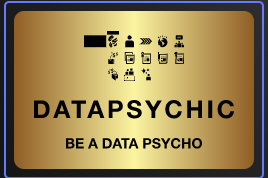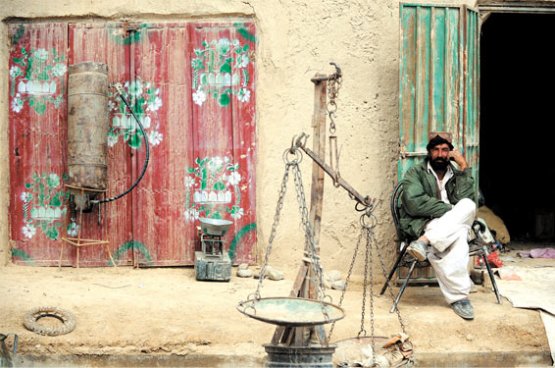Business Intelligence and Testing!!!!
Intelligence is a very general mental capability that, involves the ability to reason, plan, solve problems, comprehend complex ideas, learn quickly and learn from experience.
Further simply put – It is “catching on,” “making sense” of things, or “figuring out” what to do
Business Intelligence is collecting the data from various sources of any organization to aid in planning, solving business problems and learning from experience there by taking proper decisions to expand its business and maximize profits.
Lets understand what a Warehouse is and how we can connect it to Information and Technology!!
Consider a person wants to set up a Provisional Store and he wants to know how to stock the Goods to maintain Supply and Demand life cycle. He’ll start a shop in a small room and gets goods in a limited quantity. 100 kg rice, 50 kg wheat, 100 kg dal, 3-4 varieties chocolates, 3-4 varieties of soaps and starts his business.
People start coming to his store and start buying things. In 15 days his stock is almost sold and then he analyses how the sales were. To achieve this he will maintain all the data on a paper and calculate (Add, Subtract, Multiply, Divide)
He’ll continue this for sometime and forecast the data he collected.
- If analysis says that the goods are sold as per his calculations and he’s making profit then he’ll start getting goods in large quantities. Since the store is very small he cannot accommodate goods in bulk in the store so he will setup a warehouse where he can store all the goods. And small amount of goods required for a month, he’ll move them to the provisional store for selling.
- If analysis says that the few goods in his shop are not sold and he is not making profit as expected but he is not making loss, then he can change the goods he is selling and try his analysis to ear profits
- If analysis says that the goods in his shop are not sold at all and he is in huge loss then he might have to stop his business.
As a shopkeeper he needs to do analysis on the Goods available and the sales in the warehouse to continue or stop buying things (forecasting), he creates different racks to keep different goods to access them easily and very quickly. He should know where he stored the goods and how they are related say for an example. He would store all the Groceries in one rack, Home Maintenance goods in one rack, canned foods in one rack etc., if he stores the goods logically and physically he will be able to get to know about the Stock easily.
Basic analysis to be done by the shopkeeper before he decides to setup a warehouse.
How is the Demand and supply in the warehouse? To answer this he needs to answer the following questions.
- Find out the existing stock of goods
- Does he need new goods – Inserting new records in Data warehouse
- Does he need more number of existing goods -Updating of records in Data warehouse
- Does he need to remove goods which or not in demand – Deleting of records in Data warehouse
If a small provisional store needs to decide the progress based on the available data we can imagine the power of data in any big organization. 10 years ago the cost of a 500 MB USB Drive was sold for INR 2500.00, but now we can get 500 GB Flash Drive for INR 2500.00
As on today we have 7,195,883,823 population in this world. Most of them are connected with one or more Public or Private organization , it could be Banks, Schools, Colleges, Employees, Employers etc.,. Like the above shop keeper the organization needs to maintain the Data relates to 7,195,883,823 people. So Experts in Information and Technology industries are developing robust techniques to maintain and validate the data.
Just think 10 years ago the cost of a 500 MB USB Drive was sold for INR 2500.00, but now we are getting 500 GB Flash Drive for INR 2500.00 – what does it mean ? the data is increased !! so we need more space for lesser price !!!
All organizations are very much interested on Customer data to enhance and forecast their business. So they are seeking Information and Technology specialists for designing. Technology specialist are proposing solutions at various levels to capture and maintain the data for Analysis and Forecasting.
In today’s world, all of us are connected through internet be it social networking, ecommerce, online banking etc. So the experts in Information and Technology industries are developing robust techniques to maintain and validate such huge data and assist the businesses to completely change the way they have been working.
Just like analysis of Warehouse data and the trends of customer’s buying trends help a shopkeeper to plan his strategy to buy goods to maximize the profits, any organization needs to analyze the data of its own organization (Internal data about various departments and people in the organization) and the Customer data to forecast its business and strategize to maximize profits. So they are seeking Information and Technology specialists’ expertise for designing a data warehouse. Technology specialists are proposing solutions at various levels to capture and maintain the data for Analysis and Forecasting.
This gave birth to a closed group called Business Intelligence (Group Information System). There are many roles involved to capture the customer data. Let’s discuss responsibilities of few of them.
- Solution Architect who designs the whole System right from
- How the data is retrieved from source?
- How the retrieved data is loaded into Warehouse?
- How the data is used for analytic purposes?
- Business Analysts who
- Analyze the business needs
- Create the rules for capturing the right data from the source systems.
3. Data Analysts who design how the source system and target (warehouse) interact with each other.
- What data can be loaded?
- How should it be sent into the data warehouse?
4. Developers who convert business needs into coding that will
a. Extract the data from the source system
b. Load the data into warehouse based on the Rules provided by Data modelers and business analysts
- Testers who validate
a. whether source is sending the data what they agreed.
b. Validating the data received based on the business needs
c. Validating the transformation rules defined by the business analysts in Source to target document
d. Validating the code developed by developers are as per the business / transformation rules provided.
Folks – please comment how useful the write up is!!! I will be posting about Test Planning (Estimation,Test Plan, Test Cases and Test Conditions) in my next blog.
Many Thanks – Asik
This post is updated with the valuable inputs of Harika Dommeti (Thanks :-))



Good initiative! Keep up the good work 🙂
Nice Article 🙂
Informative! Do keep posting!
Thanks Amrita – Keep follow my blog for more updates
Good..Provides basics of BI, would appreciate to throw more info on how a BI Testing is carried,,,
Thanks Rajesh, I will update my view on BI Testing carried in my upcoming future